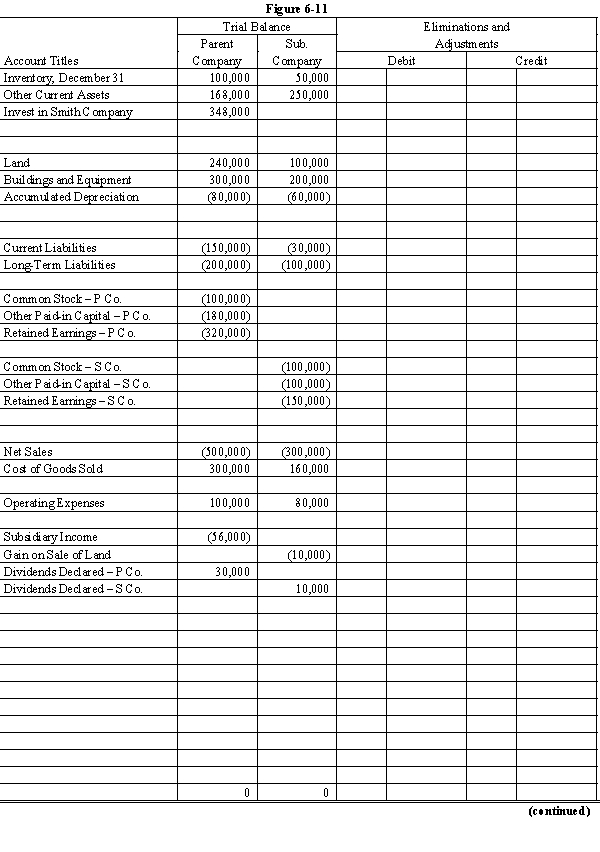On January 1, 20X8, Paul Company purchased 80% of the common stock of Smith Company for $300,000. On this date Smith had total owners' equity of $350,000. Any excess of cost over book value is attributed to a patent, to be amortized over 10 years.
During 20X8, Paul has accounted for its investment in Smith using the simple equity method.
During 20X8, Paul sold merchandise to Smith for $50,000, of which $10,000 is held by Smith on December 31, 20X8. Paul's gross profit on sales is 40%.
During 20X8, Smith sold some land to Paul at a gain of $10,000. Paul still holds the land at year end.
Paul and Smith qualify as an affiliated group for tax purposes and thus will file a consolidated tax return. Assume a 30% corporate income tax rate.
Required:
Complete the Figure 6-11 worksheet for consolidated financial statements for the year ended December 31, 20X8. 

Definitions:
Equilibrium Price
The market price at which the quantity of a good supplied equals the quantity demanded, leading to a stable market situation.
Government Intervention
Actions taken by a government to affect the economy, which can include regulations, subsidies, tariffs, and more.
Equilibrium Price
The price at which the quantity of a good or service demanded equals the quantity supplied, resulting in no shortage or surplus.
Equilibrium Quantity
The quantity of goods or services sold and bought at the equilibrium price, where market supply equals market demand.
Q8: Long-term partners, Pop, Ping, and Pam have
Q12: Jolly is a partner in the HoHoHo
Q18: Powell Company owns an 80% interest in
Q18: Assuming that the functional currency of a
Q25: Soap Company issued $200,000 of 8%, 5-year
Q35: An investor prepares a single set of
Q56: Which of the following statements regarding amortization
Q63: The following transactions were made by the
Q122: The contract rate is also called the
Q141: Which of the following statements regarding accounts